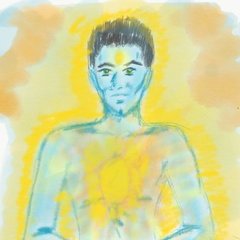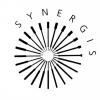Search the Community
Showing results for tags 'archetypes'.
Found 4 results
-

Basic human models that are repeated over and over with minor variations
dwai posted a topic in General Discussion
If any of you have watched Battlestar Galactica, the primary antagonists in that show are the human-cybernetic hybrids called Cylons. There were 12 models and of these 8 were cloned to build up the humanoid cylon population. Over the years I’ve noticed that there exist certain archetypical human characteristics too. Certain basic “patterns” keep repeating themselves again and again, across the so-called ethnic and racial boundaries. A certain “base” pattern is recognizable at a subconscious level (usually), and that’s why when, sometimes, you meet a definitive stranger, you get the feeling you’ve known them somehow. There is just enough similarity in the way this stranger looks and behaves that your mind does a sort of “mapping” with a person you know from before. I wonder why? Any theories about this? -
Hi Bums, As some of you know, I just love comparing the metaphysical systems of different times and cultures with one another. Frequently, I find that they have central ideas in common. Thus a comparative approach tells us more about the Collective Unconscious, shared by all of humanity. Looking at an Archetypes from a variety of different perspectives serves to illuminate and amplify it further. Chapter 50 of the Daodejing seems to be a good example for what I mean. From Robert Henricks' translation: Now, the Death card in Tarot is the thirteenth of the Major Arcana. The traveller who comes out into life and goes back into death is The Fool. He stands both at the beginning and the end of the series of the Major Arcana, so he can be attributed with both the numbers 0 and 22. Cards that share the same checksum are seen as related with each other, like Death and The Fool, since they can both be reduced to the number 4. The fourth of the Major Arcana which is The Emperor. He is another important Archetype in Daoism, but we will safe him for later and stay with The Fool. The Fool is the eternal spiritual seeker, the original Tarot Bum undertaking the adventure of Individuation. He represents our childlike and spontaneous nature that we start out and hope to end up with. He is the wandering Daoist sage so prevalent in both Lao Tzu's and Chuang Tzu's writings. Ideally, he in fact attains (a kind of) immortality. Chapter 50 of the Daodejing continues: As we see above, the tiger indeed cannot injure The Fool. He is protected by his spiritual "innocence" or state of wu wei.
- 4 replies
-
- 7
-

-
- Archetypes
- Collective Unconscious
- (and 8 more)
-
Hi Tarot Bums, It is a feature of many Tarot decks that the 36 numbered Minor Arcana reflect the images and meanings traditionally attributed to the 36 decans of Astrology, even though this is not always obvious. The most prominent system for making the link is no doubt the one devised by the Hermetic Order of the Golden Dawn. It was integrated by both Aleister Crowley and (more disguisedly) Arthur Edward Waite in the design of their respective decks. But it is nowhere as prevalent as in the beautiful Liber T - Tarot of the Stars Eternal. That deck's Major Arcana and Court Cards are somewhat simplified versions of Crowley's Thoth cards, but what sets the Liber T apart is its reception of the decans' images as found in the Sublime Books, Liber Hermetis, Indian astrological tradition, Latin Picatrix, Agrippa's Three Books of Occult Philosophy, Giordano Bruno's De Umbris Idearum, as well as in the "Hall of the Months" in the beautiful Palazzo Schifanoia in Ferrara, Italy. It is noteworthy that there are many parallels between the images in all these systems, spread out through different times and cultures - notwithstanding the transmission that without a doubt occurred. But let's look at an example. The Two of Wands is attributed according to the Golden Dawn with the first decan of the Zodiac (the first ten degrees of Aries). What do the classical sources have to say on this decan? (We find them conveniently compiled in Austin Coppock great book 36 Faces - The History, Astrology and Magic of the Decans.) Liber Hermetis: "It is an armed sign, standing upright, walking, having the likeness of a man, standing on feet like claws and holding above his head a double-sided battle-axe with both hands." Birhat Jakata: "A man with white cloth around his waist, dark complexion, pretending to protect, fearful red eyes and a lifted axe." Latin Picatrix (the direct inspiration for the Golden Dawn's decan interpretations): "The image of a black man with a large and restless body, having red eyes and with an axe in his hand, girded in white cloth, and there is great value in this image. This is a face of strength, high rank and wealth without shame." Three Books of Occult Philosophy: "A black man, standing and dressed in white and girded, a large body, red eyes, and great strength, as if angry ... This image signifies and is made for boldness, strength, loftiness, and immodesty." Further, we want to consider what some of the pioneering Tarot books in more modern times tell us about the Two of Wands: Book T (this is the GD's outline for Tarot and foundation for the Liber T deck): "The Lord of Dominion ... Strength, domination, harmony of rule and of justice. Boldness, courage, fierceness, shamelessness, revenge, resolution, generous, proud, sensitive, ambitious, refined, restless, turbulent, sagacious withal, yet unforgiving and obstinate." The Book of Thoth (Aleister Crowley's treatise on his deck which the Liber T reproduces): "The background of this card shows the power of the planet Mars in his own sign Aries, the first of the Signs. It there represents Energy initiating a Current of Force. The pictorial representation is two Dorjes crossed. The Dorje is the Tibetan symbol of the thunderbolt, the emblem of celestial Power, but more in its destructive than its creative form. More, that is, in its earlier rather than its later form. For destruction may be regarded as the first step in the creative process. The virgin ovum must be broken in order to fertilize it. Fear and repulsion are therefore the primary reaction to the assault. Then, with understanding of the complete plan, willing surrender rejoices to co-operate.Six flames issue from the centre. This indicates the influence of the Sun, who is exalted in Aries. This is the creative Will." Crowley's design for the card mirrors its decan's meaning. Of course, this short introductory survey would be incomplete if we would neglect A. E. Waite's version of the card: Wikipedia tells us how this card is generally understood by contemporary Tarot readers: ""The image on the Rider-Waite deck shows us a wealthy merchant or noble, looking out at his territory, or perhaps for his ships that have set sail. He holds the world in his hands, symbolizing power." This reiterates at least some of the decan's attributions. Whereas Waite's own words - strongly based on popular interpretations and ever so cautious to avoid any violation of the author's oath of secrecy to the GD - are not very reminiscent of the card's decan: "Divinatory Meanings: Between the alternative readings there is no marriage possible; on the one hand, riches, fortune, magnificence; on the other, physical suffering, disease, chagrin, sadness, mortification. The design gives one suggestion; here is a lord overlooking his dominion and alternately contemplating a globe; it looks like the malady, the mortification, the sadness of Alexander amidst the grandeur of this world's wealth." By the way: This thread spins off a current discussion on the thread "Tarot Set for Advanced" and was suggested to me long ago by Nungali - thanks.
- 11 replies
-
- 3
-

-
- Archetypes
- Astrology
-
(and 5 more)
Tagged with:
-
This thread is spinning off my "Tarot as a System of Metaphysical Philosophy" thread, where I started a conversation with Mandrake that I took the liberty to transliterate here. As I was asked to go into certain specifics that might break up the original thread which is of a more general kind. That's cool with me. May I ask you why this topic particularly interests you? I shuffled the cards, then fanned them out for the querent to draw the required number by their left hand (the one that connects to the heart or, in more modern terms, to the right cerebral hemisphere) - a very common method. However, especially for therapeutic application, I think it's advantageous that the querent selects the cards by themselves, so they would identify with their message more readily. I then laid them out using whatever spread would seem most appropriate regarding the query. Ranging from the good old Celtic Cross to relationship and decision spreads. If you want me to demonstrate some of my favourite spreads, just ask... This could conceivably be a problem especially for OCD types doing Tarot on their own. It's also typical for excited beginners (at least they get to know the cards fairly quickly this way). If the readings are supervised by a sensible counsellor, this is hardly an issue. Cut to the core of a problem immediately. Much like a well interpreted dream might, but available any time on purpose. I remember that psychiatrist I was collaborating with once looking at one of my spreads, then exclaiming: "This one card here is worth a whole psychotherapy!" Furthermore, he was convinced that Tarot can outline the way for a patient to progress in a straightforward manner. Also, I would highlight that a card image or a certain symbol on it can assume a particular meaning for the querent, which they can take away from the reading and think of when the need arises. Lastly, using Tarot offers a playful approach to psychological problems that is quite in tune with the childlike nature of the unconscious mind which is very receptive to its archetypal symbolism. All the more due to the impression that a spot on revelation based on a seemingly random process leaves. You are very welcome. It's fun for me too to think back to those Golden days... <sighs>

